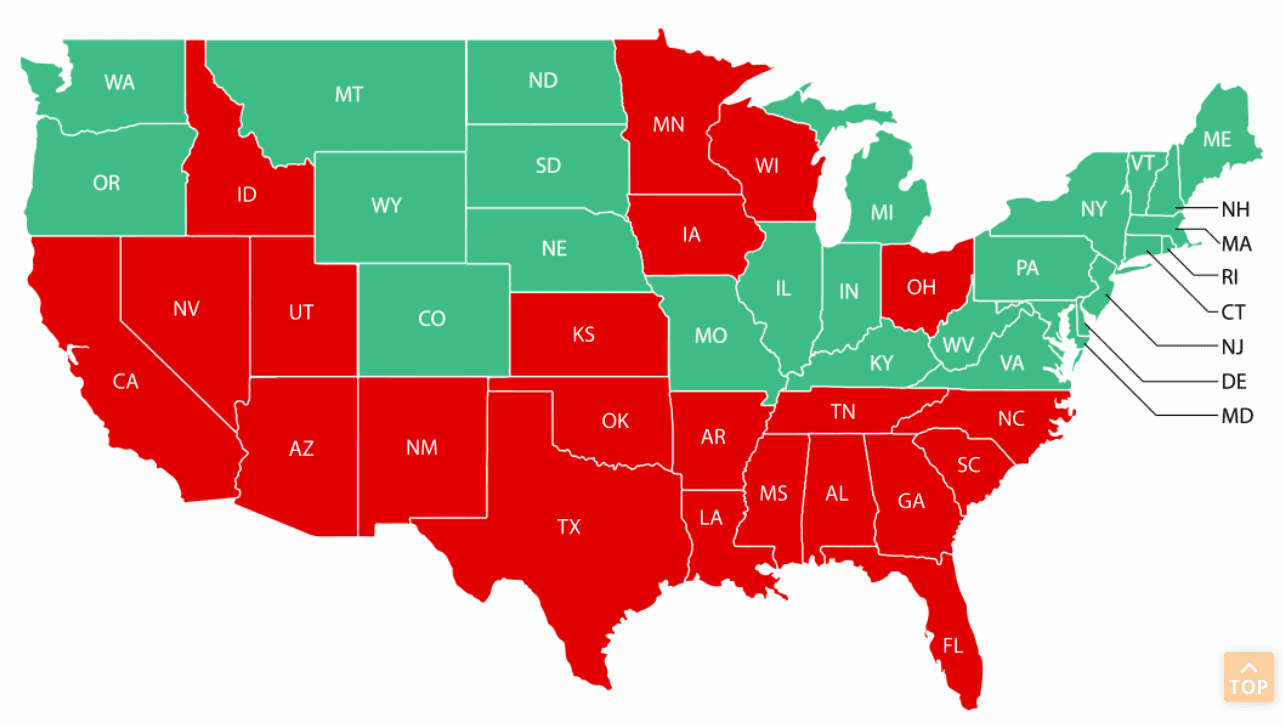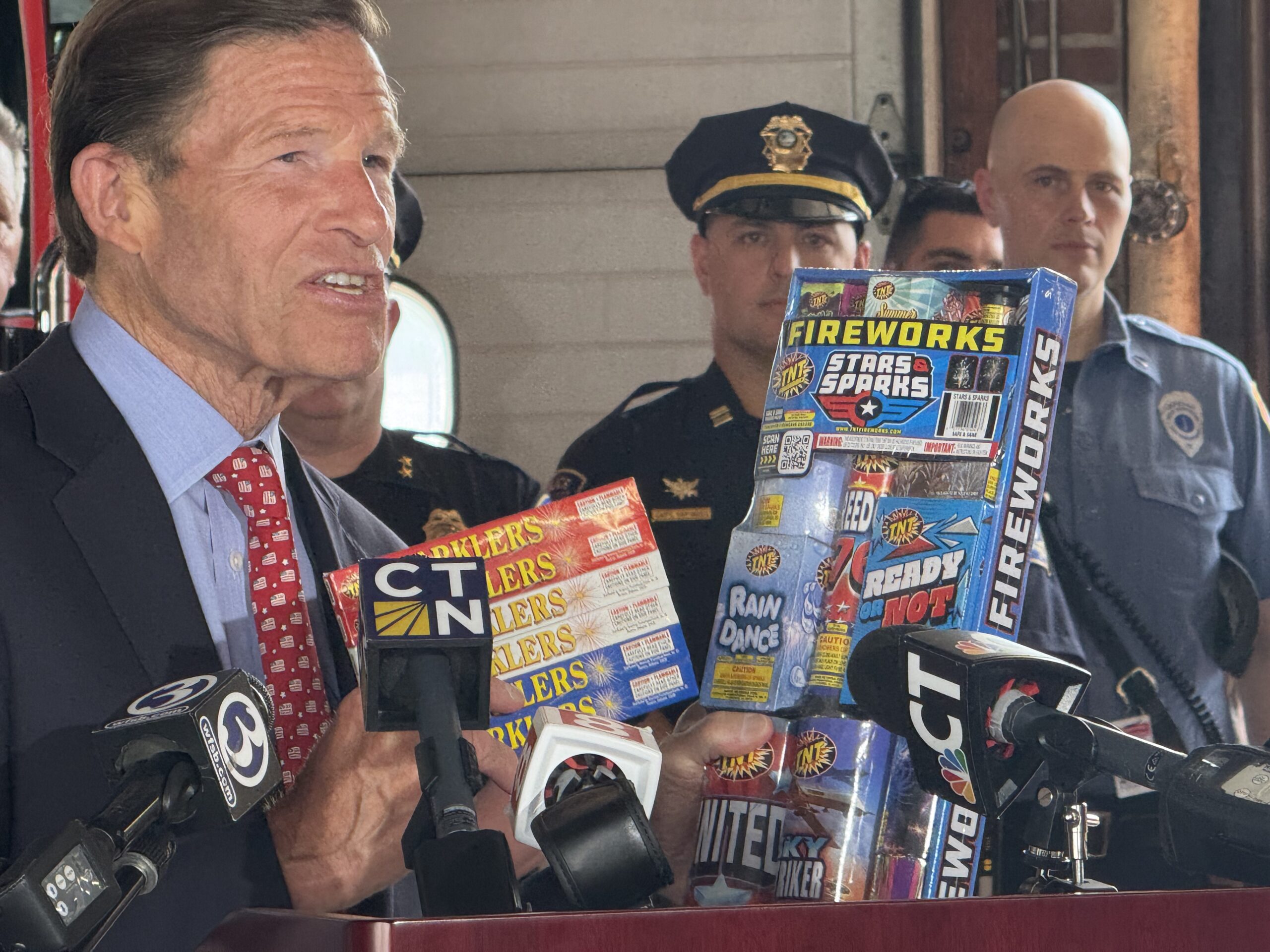Connecticut To Crack Down on Air Travelers

Audio By Carbonatix

Travelers from states shown in red are being asked to self-quarantine for 14 days when they arrive in Connecticut.
As of Tuesday, air travelers from 22 states will have to ‘self-certify’ their quarantine plans before leaving the plane.
By Christine Stuart, CTNewsJunkie.com
Gov. Ned Lamont didn’t know exactly how the state will crack down on residents coming from high-infection areas, but air travelers will be asked to “self-certify” on the plane before disembarking how they’re going to quarantine when they reach Connecticut.
“Maybe there will be a state police officer nearby just to remind people how seriously we’re taking this,” Lamont said Monday during his press briefing.
Lamont said he’s working with New York on a “strong certification policy” that allows people to declare how they will quarantine and where they will be staying for that 14-day period.
Lamont has been hesitant to attach fines or penalties to any of the executive orders he’s announced to date.
“We haven’t had to do that to date, when it came to masks, when it came to safe store rules, when it came to preliminary quarantining, but we did want to send a strong message that we are taking this seriously, and you should take it seriously, so before you get on that plane in Miami Beach and come up to Bradley Airport, know that we will be asking you where you plan to self-quarantine, and make sure that you are taking this seriously,” Lamont said. “Let’s see how that goes for a couple of weeks. If we find we still have a lot of leaks in the bucket, we can think about other disincentives to make sure people take it even more seriously.”
The good news is that “air travel to Connecticut from states like Florida, Texas and Arizona is down 70% since COVID. It’s down another 50% since we put in place our quarantine,” Lamont said.
The 22 states now subject to the quarantine, as of July 14, include Alabama, Arkansas, Arizona, California, Florida, Georgia, Iowa, Idaho, Kansas, Louisiana, Minnesota, Mississippi, North Carolina, New Mexico, Nevada, Ohio, Oklahoma, South Carolina, Tennessee, Texas, Utah, and Wisconsin. Delaware, which had been on the quarantine list, was removed Tuesday.
Lamont said there are no plans to crack down on out-of-state drivers at the moment.
As far as COVID-19 is concerned, Connecticut’s Chief Epidemiologist, Dr. Matt Cartter, said it may be inappropriate to talk about it in terms of waves because there may be “ongoing transmission all throughout the year.”
“We may not see distinct waves,” Cartter said.
He said it’s probably better to “stop thinking about waves and it is likely that we will see a resurgence, exactly when, none of us can predict.”
Cartter said less than 5% of Connecticut’s population has had an infection and “there’s a lot more of us that haven’t been infected.”
He said that’s why social distancing is so important. He said now is not the time to relax.
He said the case numbers and hospitalizations have stayed about the same. As of Monday there were 74 people in the hospital and Connecticut has had 47,510 infections since the start of the pandemic.
On Tuesday, the total number of people hospitalized dropped by another eight, to 66, and there were 20 new cases of COVID-19 confirmed out of 2,477 results recorded. One more fatality was reported.
Cartter said control over whether the infection rate goes up sharply or gradually is “really up to us and what we do.”
As far as school is concerned, Cartter said, “The key is to not reopen schools when we have widespread community transmission of COVID-19.”
Right now, Connecticut’s rate of infection is around 1%. If it stays there, it’s likely schools will reopen in the fall, but if it goes up to 5% then it’s unlikely schools will begin with in-person classes.
A decision will be made in early August.
Fran Rabinowitz, executive director of the Connecticut Association of Public School Superintendents, who appeared with Lamont Monday at his press conference, said schools will be ready with three scenarios.
“We are watching the science very carefully. We want to bring them all back,‘’ Rabinowitz said. “We are working on a hybrid model if, in fact, the data ticks up and we realize we cannot bring all the children back and keep our staff and children safe, we will got to a hybrid model where we will bring some children in on some days and others on distance learning and bring them in on other days, different grades at different times.”
Ronni Newton, We-Ha.com, contributed to this article.
Republished with permission from CTNewsJunkie.com, all rights reserved.
Like what you see here? Click here to subscribe to We-Ha’s newsletter so you’ll always be in the know about what’s happening in West Hartford! Click the blue button below to become a supporter of We-Ha.com and our efforts to continue producing quality journalism.



